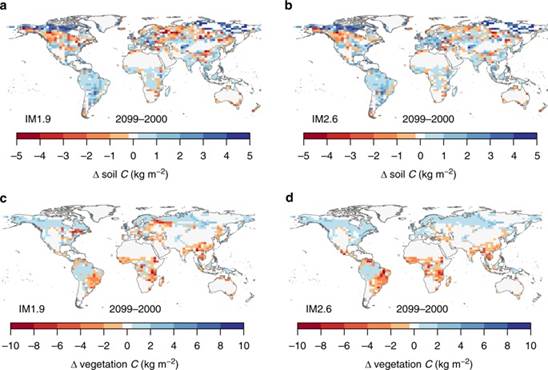研究称森林固碳作用更有助实现控温目标
来源:《自然—通讯》
作者:Anna Harper等
时间:2018-08-23


英国埃克塞特大学发布一项新研究说,与生物质能碳捕集与封存相比,利用森林的固碳作用可能更有助于把全球气温升幅控制在既定目标水平内。
根据《巴黎协定》,各方以“自主贡献”方式共同应对气候变化,将全球平均气温升幅较工业化前水平控制在2摄氏度之内,并为把升温控制在1.5摄氏度之内而努力。
研究团队在英国《自然·通讯》(Nature Communications)杂志上发表报告说,现在国际上控制全球升温的方案中都包含使用生物质能碳捕集与封存(BECCS)策略,即通过生物能源作物从大气中吸收二氧化碳,这些作物作为燃料进行发电等提供能源,最终实现碳的捕捉及封存。但这种方法需要占用大量土地来种植生物能源作物。
为此,埃克塞特大学研究人员领衔的团队,利用计算机模型模拟分析了使用生物质能碳捕集与封存和森林固碳两种方式可能带来的效果。
结果发现,生物质能碳捕集与封存如果使用过多,或者使用区域不当,会造成大气中的温室气体增加。此外,这种方法还可能导致植被和土壤碳流失,并最终抵消这种策略取得的效果。
埃克塞特大学汤姆·鲍威尔博士说,在一些地区生物质能碳捕集与封存策略或许可行,但在更多地区通过保护森林和恢复森林生态的方式更加合理有效。
研究人员说,加拿大东部和俄罗斯西部等高纬度地区的森林需要加强保护,而在一些土壤已经退化或森林被砍伐的地区,可能更适合种植生物能源作物进行碳捕集与封存。(来源:新华网 张家伟)
Land-use emissions play a critical role in land-based mitigation for Paris climate targets
Abstract Scenarios that limit global warming to below 2?°C by 2100 assume significant land-use change to support large-scale carbon dioxide (CO2) removal from the atmosphere by afforestation/reforestation, avoided deforestation, and Biomass Energy with Carbon Capture and Storage (BECCS). The more ambitious mitigation scenarios require even greater land area for mitigation and/or earlier adoption of CO2removal strategies. Here we show that additional land-use change to meet a 1.5?°C climate change target could result in net losses of carbon from the land. The effectiveness of BECCS strongly depends on several assumptions related to the choice of biomass, the fate of initial above ground biomass, and the fossil-fuel emissions offset in the energy system. Depending on these factors, carbon removed from the atmosphere through BECCS could easily be offset by losses due to land-use change. If BECCS involves replacing high-carbon content ecosystems with crops, then forest-based mitigation could be more efficient for atmospheric CO2 removal than BECCS.
原文链接:https://www.nature.com/articles/s41467-018-05340-z.pdf




